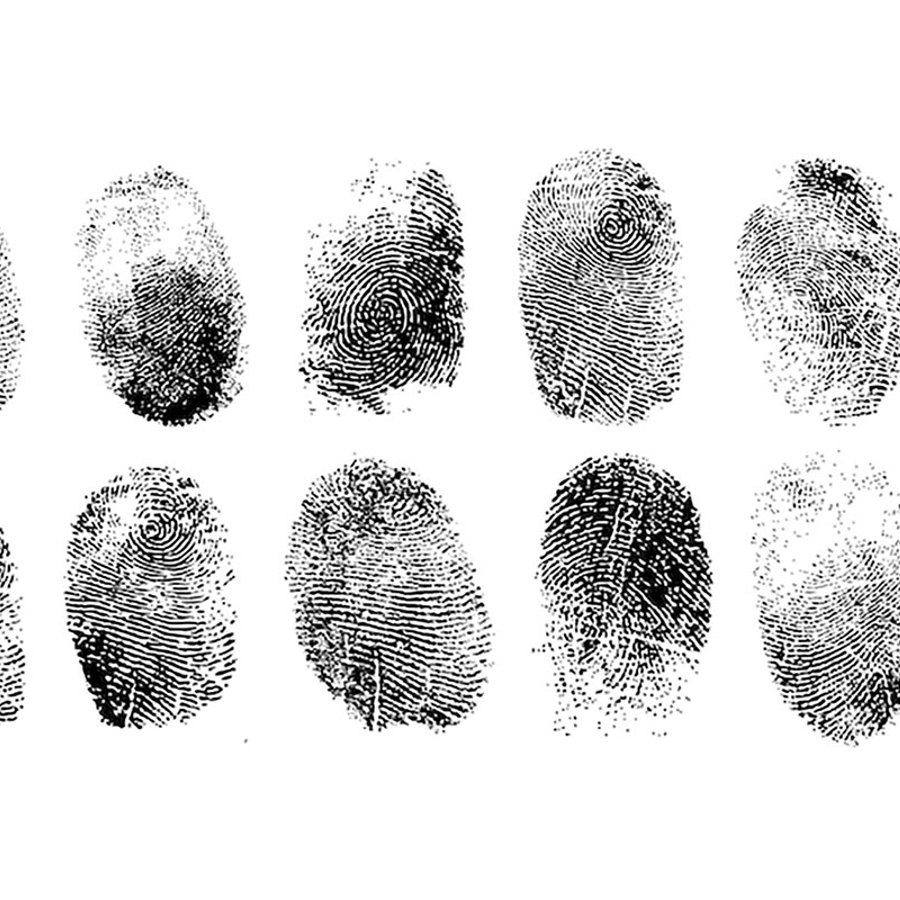
Why are the fingerprints on my left and right hand different?

- Related Topics:
- Developmental biology,
- Complex traits
A curious adult from NY asks:
“I have completely different fingerprint patterns on both hands. On my right, each finger has a very distinct and similar loop pattern. But on my left hand each finger has a distinct whorl pattern. Why does this happen?”
Great question! The short answer is that, despite people wondering about this exact question for decades, we still don’t fully understand how fingerprints are formed.
Generally, every fingerprint is different. However, there are similarities between your three middle fingers. Your pointer, middle and ring fingers usually have related patterns. Scientists call this “pattern-blocks”. They believe this occurs thanks to a combination of genetics and environment.
But the type of difference you describe (mostly whorls on one hand, loops on the other) is likely a happy coincidence! Scientists haven't observed anything that would cause one hand to have a specific pattern type, while the other hand has a different pattern type.
To understand a little bit more about why this might be the case, let’s dive deeper into how our fingerprints are formed.
Our fingerprints start forming at the same time as the rest of our bodies
The ridges on the tips of our fingers and toes (did you know our toes have unique prints too?), begin to form while we are developing in our mother’s womb at around 10 weeks. They then finish forming at around 14 weeks. What makes them so cool, and so useful for identification, is that no two fingerprints are exactly the same.
The ridges that make up our fingerprints are called dermatoglyphs. Much like Egyptian hieroglyphs, they tell a unique story about us, our parents' genetics, and the environment of our mother’s womb. Also like the famous Egyptian writing, these prints will stay the same for a very long time. Our whole lives, in fact!
While we are not entirely sure how the ridges are formed, scientists have some theories. The first theory is that these ridges follow some template set by blood vessels or nerves. A second theory is that there are a series of complex chemical reactions that cause the patterns to form.
The third theory, my personal favorite and the one most cited by scientists, is one that involves the development of our fingers. As our fingers grow we form something called volar pads, which are basically swollen bumps on the tips of our fingers. As these swellings go down, our outer layer of skin wrinkles as it contracts. These wrinkles are our eventual fingerprints.
You can imagine this is kind of like how when you remove the juice from grapes to make raisins, the skin of the grape becomes much more wrinkly. But unlike a squishy and moldable raisin, our fingerprints stay forever.

Our fingerprint patterns are inherited … sort of
Our fingerprint patterns are complex. The parts of the pattern most obvious to the eye are the loop, whorl, and arch pattern. These are the patterns you mention in your question and they are the most basic aspect of the pattern that everyone has. This aspect of your fingerprint seems to be the most influenced by the genetics of your family.
The details of the fingerprint, and what makes it unique to you, are less easily visible. It can be something like the direction of the loop, the number of ridges, or the placement of the arch. It’s not yet fully understood how these unique details are formed, but it’s believed to be a complex combination of many genes and the environment of the womb.
Recent research has suggested that the loop, whorl, and arch patterns are heritable due to the nature of the genes that influence this pattern. These genes are not specific to your fingertips, but rather to the growth of your entire limb.
While the details aren't fully understood, it seems like the overall shape of the hand correlates with pattern types. For example, people with relatively long fingers tend to have more whorls!

The pattern on one finger influences the patterns on the other fingers
Now, you might be wondering why some fingers might have more similar patterns to others. That’s a great question and honestly, it’s still a little fuzzy to the scientific community!
What scientists have noticed is that fingers that are next to each other usually have similar patterns. Additionally, often the pattern of one finger is highly correlated to that same finger on the opposite hand. So as an example, this means that your right pinky fingerprint is likely going to be the most similar to your right ring finger and left pinky finger.
As I mentioned earlier, your middle three fingers (pointer, middle, and ring fingers) usually have the most similar fingerprint pattern out of all the other fingers. The reason for this may be due to the location and expression of certain genes, but it is still not very well understood.
One other potential explanation has to do with how your hands are positioned during development. Growing babies often have their hands in a fist-like position. By being on the edges of this fist, the thumb and pinky are likely slightly more open to the environment of the womb than the rest of the hand. Scientists have guessed that this exposure to the uterine environment may make them different from their counterparts.
But, the reality is that we don’t know for sure! Hopefully, as research continues on this topic, we’ll be able to discover more.

Author: Ilana Zucker-Scharff
When this answer was published in 2022, Ilana was a Ph.D. candidate in the Neuroscience Interdepartmental Program, studying the influence of social experience on behavior in fruit flies in Thomas Clandinin's laboratory. She wrote this answer while participating in the Stanford at The Tech program.
 Skip Navigation
Skip Navigation
